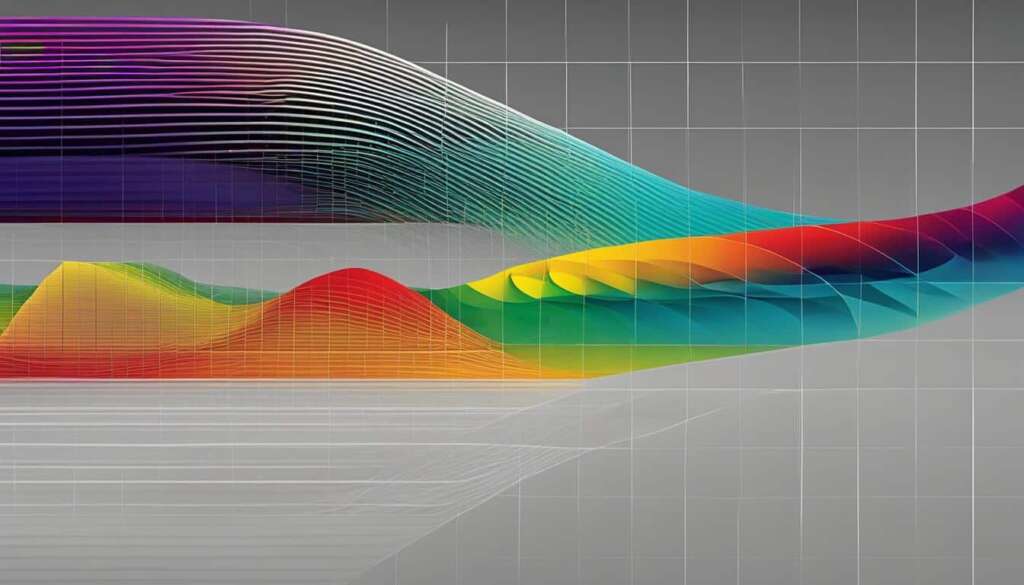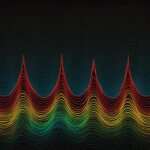Table of Contents
Hertz is a crucial concept in understanding a range of phenomena that we experience in our daily lives. It is widely used as a measure of frequency and plays a fundamental role in fields such as telecommunications, audio technology, and electronics. In essence, hertz refers to the number of cycles per second in a wave or signal, and its measurement enables us to better understand the natural and artificial frequencies that surround us.
In this article, we will delve into the concept of hertz, its definition, and how it is used to measure frequency in various contexts. We will also explore the practical applications of hertz in everyday life to appreciate its significance fully.
Key Takeaways
- Hertz is a measure of frequency, referring to the number of cycles per second in a wave or signal.
- The SI unit for frequency is hertz, emphasizing the essential nature of this concept for natural and artificial phenomena and technology.
- Hertz has wide-ranging practical applications in everyday life, including telecommunications, music and audio technology, and electronics.
- By understanding hertz, we can gain a deeper comprehension of how different waves and signals behave in various circumstances and appreciate the natural and artificial frequencies around us.
What is a Hertz?
A hertz is a unit of measurement used to describe the frequency of different waveforms, such as sound waves and electrical signals. One hertz is equal to one cycle per second. It is abbreviated as Hz and named after the German physicist Heinrich Hertz, who made significant contributions to the study of electromagnetism and radio waves in the late 19th century.
Frequency measures how often a waveform repeats per second. For example, if a sound wave completes one cycle of compression and rarefaction 440 times per second, it has a frequency of 440 Hz. The hertz is part of the International System of Units (SI), which is based on a system of fundamental units that can be used to express all other units of measure.
When measuring frequency, the hertz is often used in conjunction with multiples such as kilohertz (kHz) and megahertz (MHz), which represent 1,000 and 1,000,000 hertz respectively. These larger units are typically used to describe higher frequencies, such as those used in radio and television broadcasting.
| Frequency Range | Abbreviation | |
|---|---|---|
| Low Frequency | 30 Hz to 300 kHz | LF |
| Medium Frequency | 300 kHz to 3 MHz | MF |
| High Frequency | 3 MHz to 30 MHz | HF |
| Very High Frequency | 30 MHz to 300 MHz | VHF |
It is important to note that the hertz is a measure of frequency and not related to amplitude, which is a measure of the strength or intensity of a waveform.
Applications of Hertz in Everyday Life
From telecommunications to music and audio technology and beyond, hertz has a plethora of practical applications in our daily lives. This section will explore some of the ways in which this measure of frequency is utilized and its significance in understanding the behavior of different waveforms and signals.
Telecommunications
In telecommunications, hertz is used to measure the frequency of radio waves for broadcasting, mobile communications, and satellite systems. It also plays a crucial role in the process of data transmission, where information is transmitted through electromagnetic signals with different frequencies.
Music and Audio Technology
Hertz is vital to the world of music and audio technology. For instance, it is used to define the pitch of musical tones, as well as to calibrate musical instruments. This measure of frequency also determines the quality of sound in audio devices such as speakers and headphones.
Medical Applications
Frequency measurement is essential in medical applications such as electroencephalography (EEG) for measuring brain waves and electrocardiography (ECG) for recording heart activity. Medical devices also use hertz to produce therapeutic effects such as shock wave therapy, which employs ultrasound waves at specific frequencies to treat various conditions.
Electronics
Electronics also rely on hertz in numerous ways, such as maintaining the resonance frequency of circuits, oscillators, and filters. The frequency of a device’s internal clock is also measured in hertz, determining how quickly a computer can carry out its instructions.
Overall, whether you’re tuning your guitar, making a phone call, or receiving medical treatment, hertz plays a part in multiple aspects of our everyday lives. By recognizing the significance of frequency measurement, we gain a greater appreciation for the intricacies of the world around us.
Conclusion
Throughout this article, we have explored the concept of hertz as a measure of frequency. We have learned that hertz is the SI unit for frequency, and it is used to measure the rate of oscillation for various waveforms.
From our discussions, we can conclude that hertz plays a crucial role in many fields, including telecommunications, music and audio technology, and electronics. By understanding hertz, we can comprehend the behavior of different waveforms and signals, and this knowledge is essential in our modern interconnected world.
In conclusion, the significance of hertz measurement cannot be overstated. It is a fundamental concept that helps us make sense of the frequencies that surround us. We hope this article has shed some light on the importance of hertz and its practical applications in everyday life.
FAQ
What is a hertz?
A hertz is a unit of measurement used to quantify the frequency of a waveform. It represents the number of cycles or oscillations that occur per second. For example, if a sound wave completes 10 cycles in one second, its frequency is said to be 10 hertz.
Hertz is directly related to frequency. In fact, hertz is the SI unit for frequency. It is named after Heinrich Hertz, a German physicist who made significant contributions to the study of electromagnetic waves. By measuring the number of hertz, we can determine the rate at which a waveform oscillates or repeats its pattern.
What are the practical applications of hertz in everyday life?
Hertz has various practical applications in our daily lives. It plays a crucial role in telecommunications, enabling the transmission and reception of signals in the form of radio waves. Hertz is also essential in music and audio technology, as it determines the pitch and tone of sounds. Furthermore, hertz is used in electronics to measure the frequency of electrical signals and ensure proper functioning of devices.
Why is understanding hertz significant?
Understanding hertz is significant because it allows us to comprehend the frequencies that surround us. From the natural rhythms of sound waves to the pulses of electrical signals, hertz provides insights into different phenomena. By grasping the concept of hertz, we can better analyze and manipulate waveforms, leading to advancements in various fields such as technology, communication, and scientific research.













